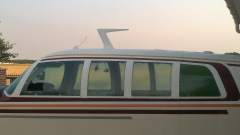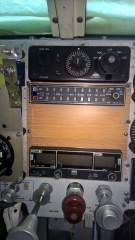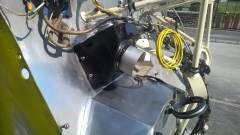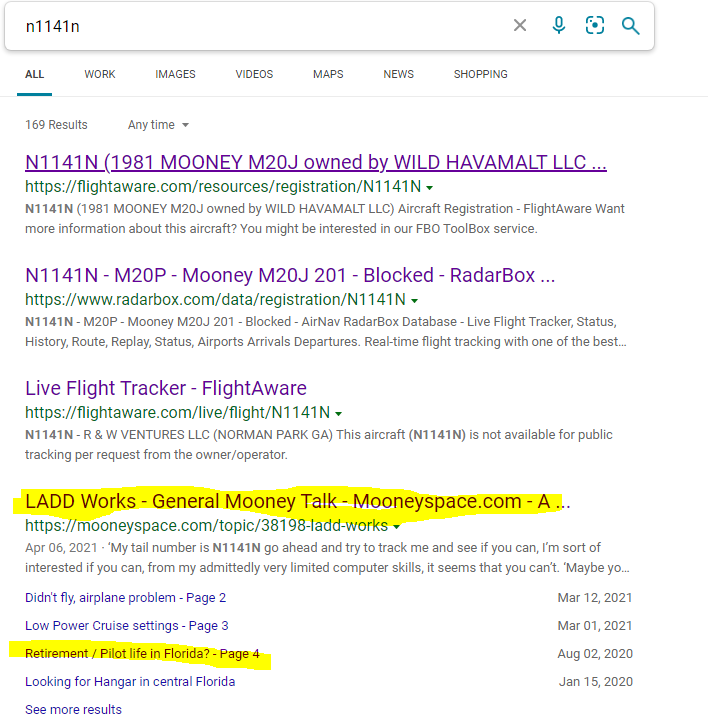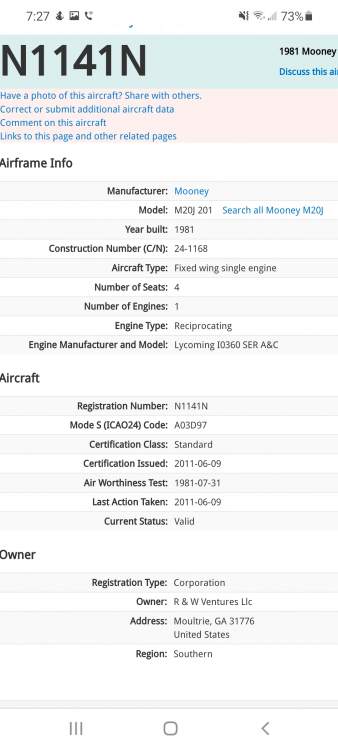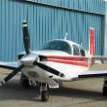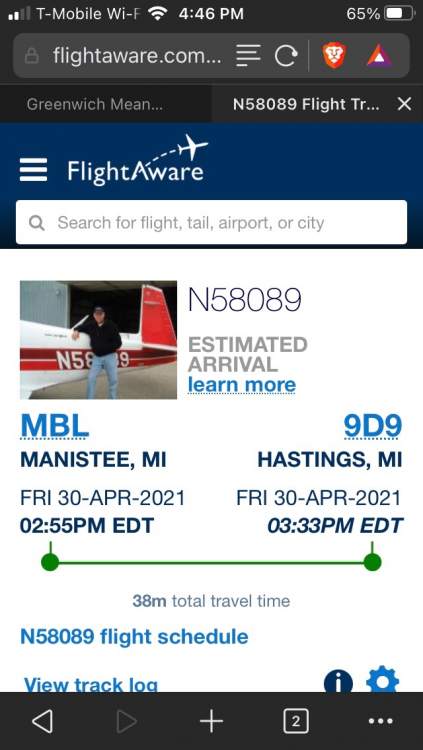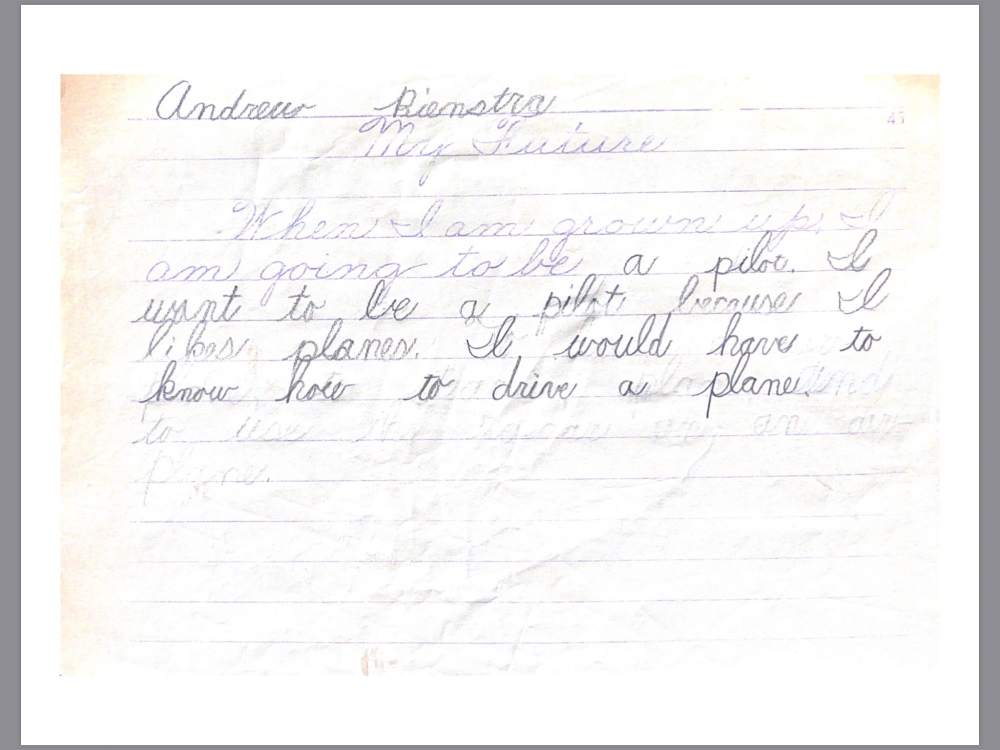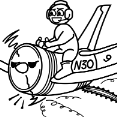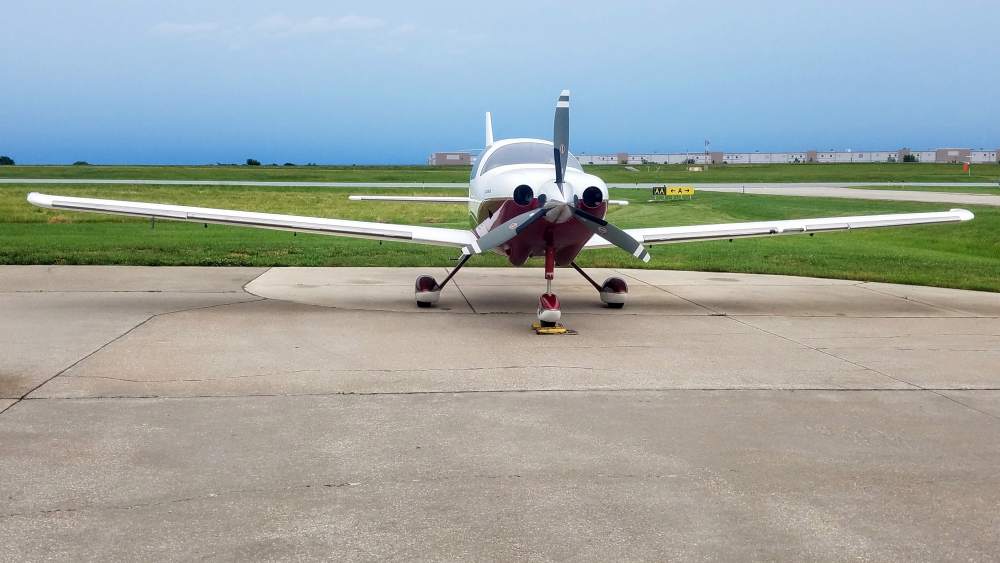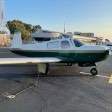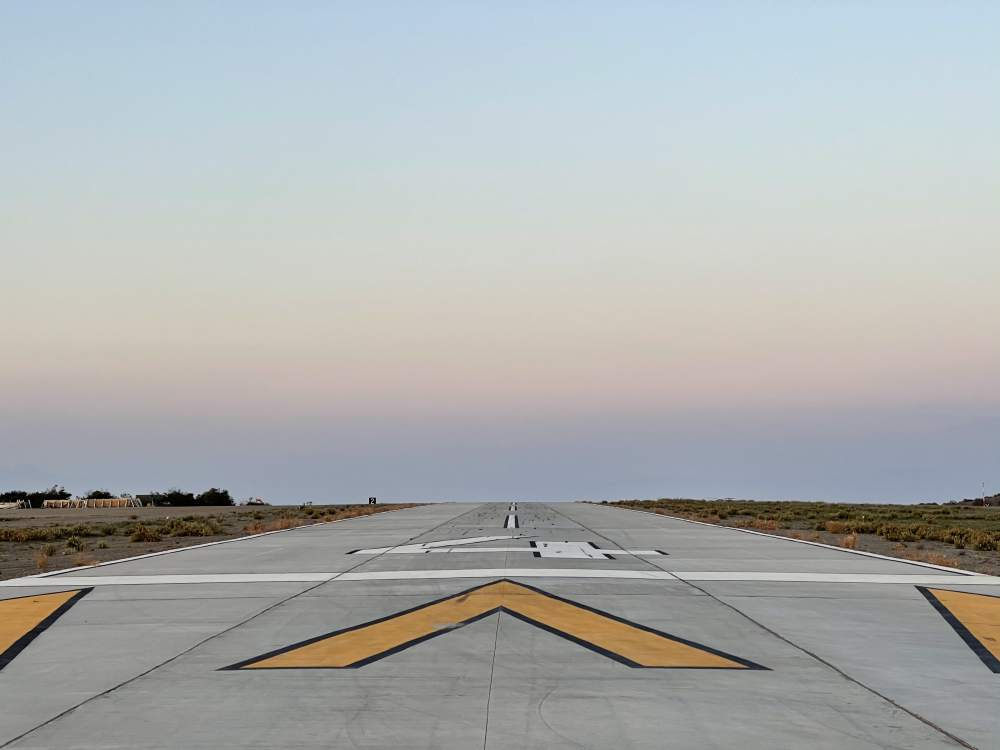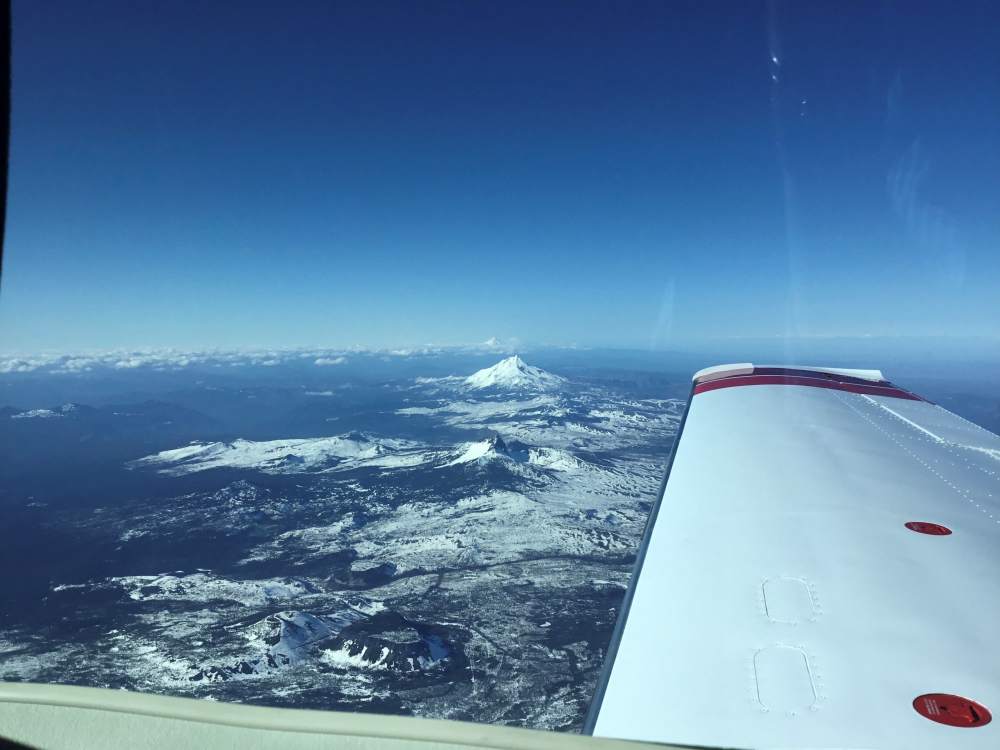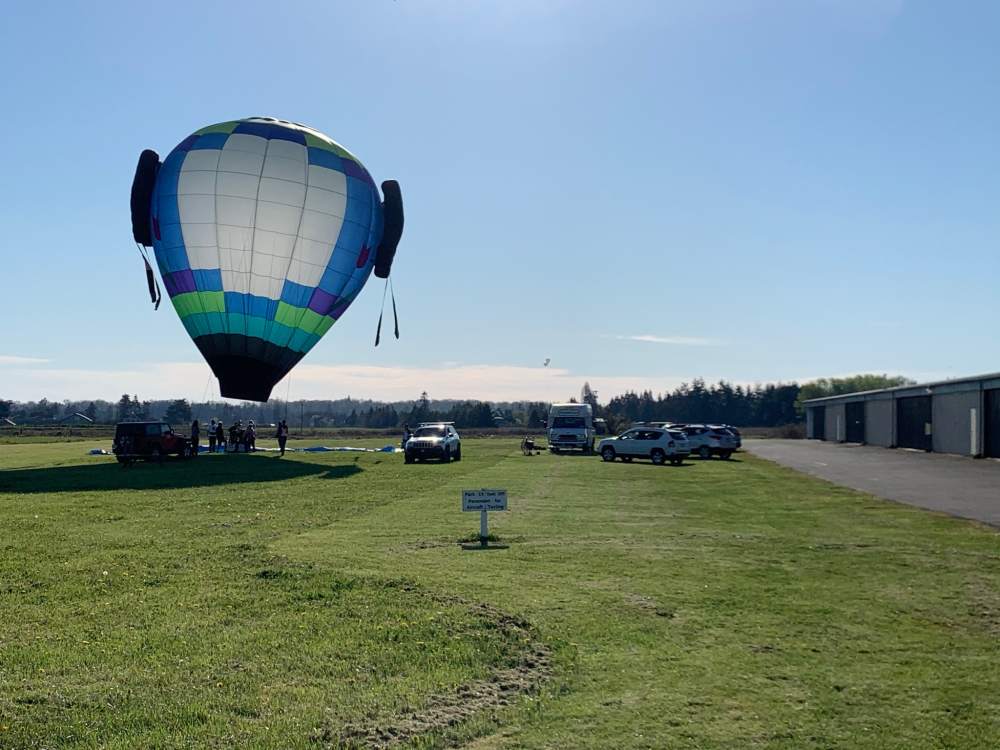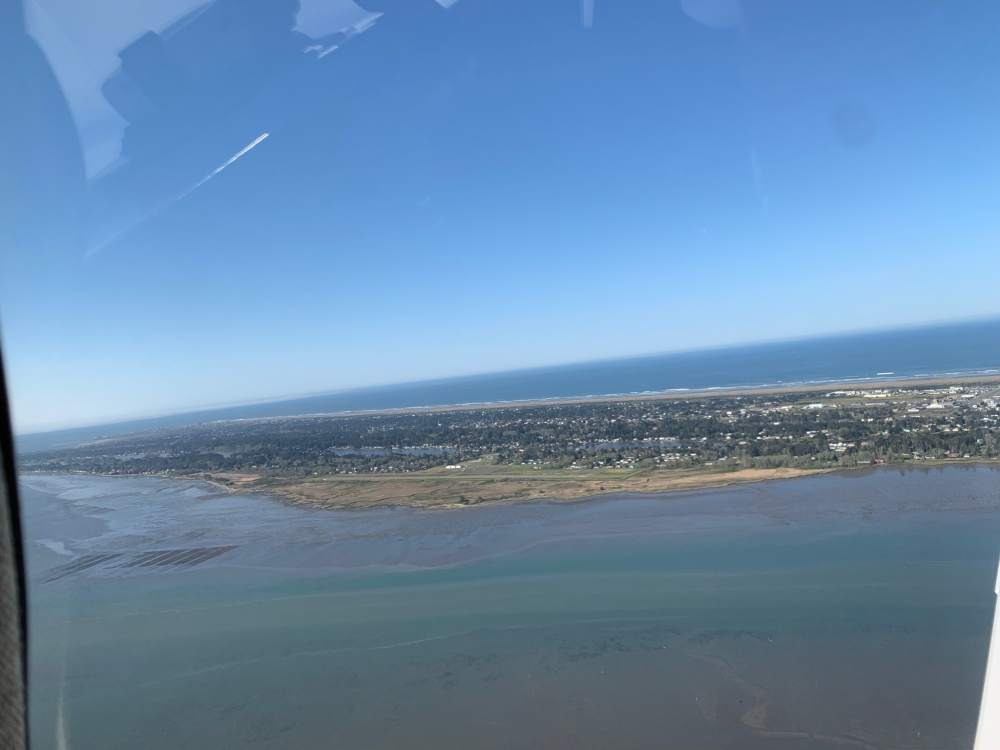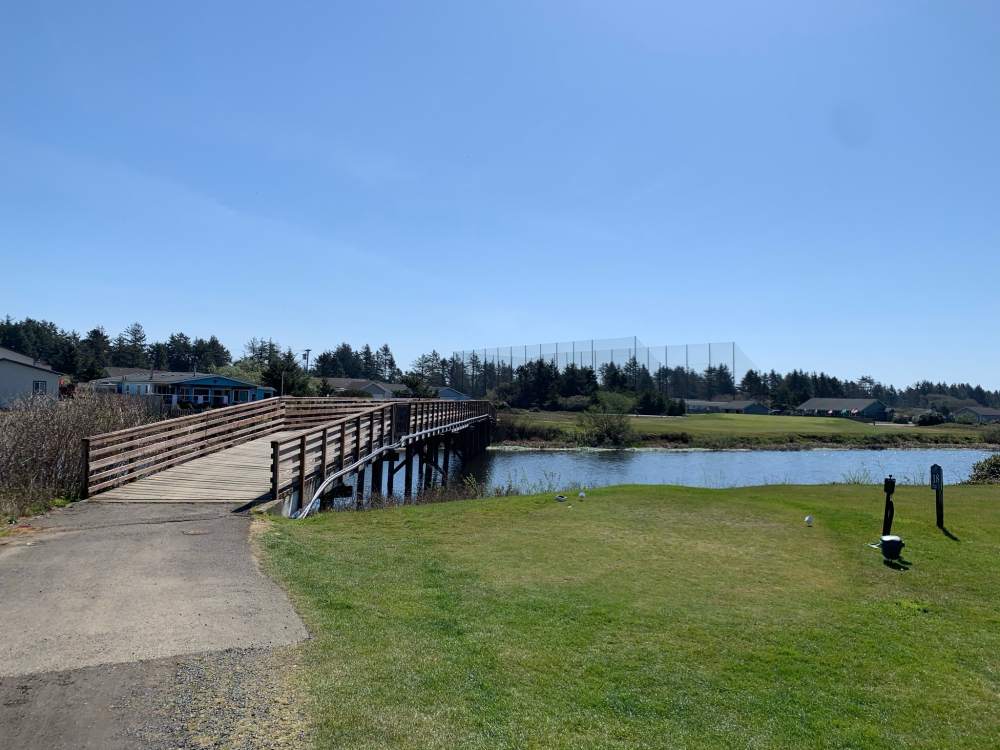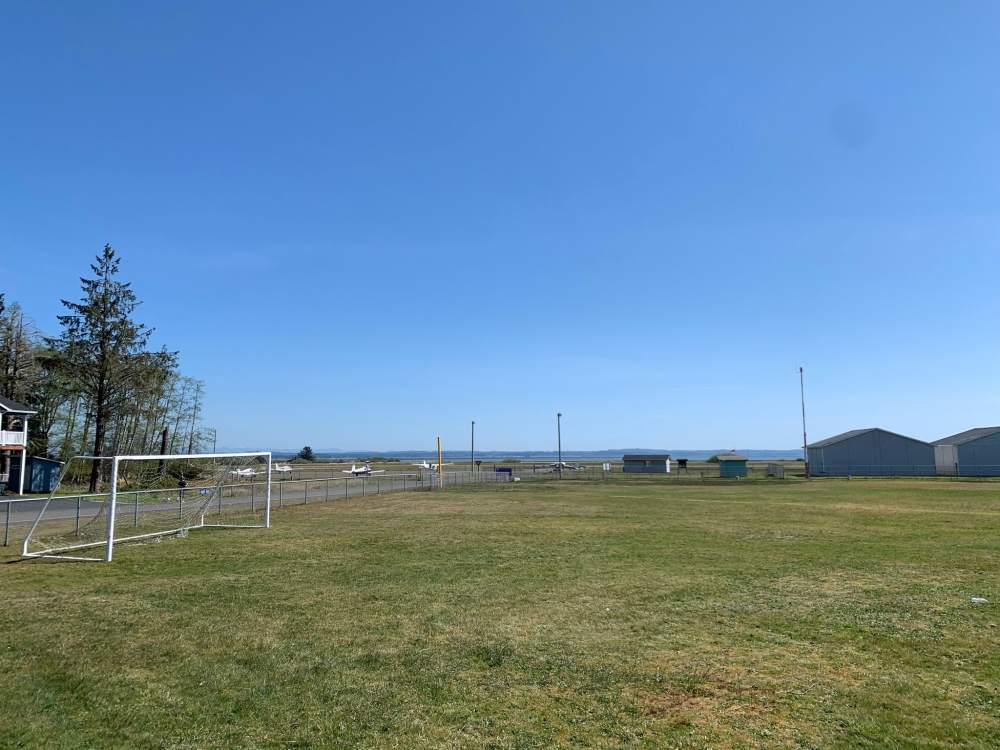Leaderboard
Popular Content
Showing content with the highest reputation on 05/01/2021 in all areas
-
I had a nice Cross Country flight last week, flying from the U.P. to Las Vegas / Henderson Field for the LOBO (Lancair Owners & Builders Organization) for their Annual Convention. We saw some pretty serious headwinds on the way out, so needed to stop in Fort Morgan, CO for fuel. Those mountains look a tad bit less intimidating from FL280 (compared to previous flights with less capable airplanes). It took us 5.5 hours to fly out, but thankfully the winds were nearly the same (just a bit less) for the return flight. We were able to complete the trip home non-stop in 4 hours, covering 1600 statue miles with deviations (yes, averaged 400 MPH). Even my wife said she is starting to really like the Lancair more than airliners now. Note, the mountain picture with the airport in it is Aspen. Return pictures to follow. Tom4 points
-
Well, N1258X departed KIMT (Iron Mountain, MI) this afternoon on the way to a stop over in Arkansas. "Chocks" / Shane is the new proud owner. Watching him on Flight Aware and seeing in excess of 200 MPH at times, priceless. https://flightaware.com/live/flight/N1258X/history/20210430/1814Z/tracklog Hope he has tailwinds every flight with Steve looking down and blessing him as the new caretaker of that plane. I found Shane to be an amazing man. Happy to see someone like him get Steve's plane. Seeing it leave was a bit challenging, but then all things must pass. Now back to getting another friends Lancair Turbine ready for first flight. Tom4 points
-
I just published a realtime video of a short flight in the Mooney M20F from the Spruce Creek Fly-In Community private airport to New Smyrna Beach in Florida. With ATC audio. The flight was recorded by 4 cameras. One of the cameras was installed under the left wing. Recording starts prior starting the engine and stops at engine shutdown.3 points
-
3 points
-
This will be quite a post. I basically grew up on a grass strip and everybody I knew from when I was age 3-10 had airplanes. My dad had a C150 when I was born, and bought a Cherokee 180 not long after my sister was born when I was 3. Dads good friends were crop dusters, retired Navy pilots, and (flying) farmers. My dad farmed ground around the airport in Monon, IN and so that’s where he kept the 150. The Cherokee was purchased from a neighbor 1 mile away who had an 1800’ grass strip at his house and we kept it there. We flew that plane all over and it was particularly awesome when he’d come home from the field and say, “I think I need to check the crops.” That was code for “We’re going flying”. We lived under a training route for Grissom AFB too so I got to watch F4s fly over at low level (we could see the pilots when they banked for the turn). I was 6 when Top Gun came out so I learned about carrier ops from a crop duster named Steve who flew EA-6s around Vietnam. About 7 I attached a hook to the back of my bike to simulate a trap by tying a rope low between two tree trunks. I learned about Newton’s first law that day when I didn’t bolter. I’d been in planes my entire life but I did Young Eagles when I was about 8 with another crop duster, Joe, but in his Funk. Later, I used to bomb around the countryside with his son who was 2 years younger than me in their Cub during the summer. He had a grass strip at his house and we’d fly there too, even though it was 30 miles away straight shot on a state highway. My 3rd grade book report was on Chuck Yeager’s autobiography, and my teacher (who was old enough that she taught my mom in 3rd grade) had to call and ask what “buying the farm” meant in the flying world. I had my first glider ride with the same CFI that taught my dad and signed his logbook, both the PPL and the IR. I was hooked. When I was 17, I met my wife who had lost her father in a plane crash the year before. I remember the day he crashed because nobody knew who the crop duster was that went down until all the others returned home that night. I talked about flying with her but I never pushed the subject. After we got married, kids came, careers bloomed, and things got in the way. It took until I turned 40 to start lessons myself. my wife signed me up after discussions with her boss who is a pilot too and flies his own Citation. I never felt like I was going to fly and when she handed me the Cessna kit, I figured it was just a bag for my son to use. It’s a slow trip, our careers and kids allow me to fly on Saturday mornings so I do that. If I can master my short field landings without pretending to be grabbing the third wire, I’d be ready for my practical. I love it, even when I’m having the occasional off day and I basically pay for my 23yo instructor to yell at me, I know she knows I am better than the “off day” but it’s a challenge I love. Listening to my earlier liveATC recordings I can tell I’ve grown and I can hang with many of you now on the radio. This is the day she surprised me with my lessons. Also the day My son and I got our first ride in a Citation too.3 points
-
This is exactly what its for, any short runway. If you don't have 70% of rotate speed as you come up to the middle of the runway its time to abort takeoff. You'll still have time to stop and then consider next options based on what you might think is the issue. 2150' is ordinarily not an issue in a C model at 540' elev, but this day was different for wahetever reason. But as pilots we need to be primed to make the abort decision before passing the halfway. Of course we have no clue what actually happened in this takeoff so not passing judgement on this specific incident - just repeating a best practcie which should be apart of every emergency pre-departure brief or we won't be prepared to take necessary action in time. Most of the older pilots never got this kind of training in their private pilot training (I certainly didn't), but most of the more recently trained private pilots do - for good reason.3 points
-
He had partial power loss. Could not get out of ground effects. He tried to accelerate over the lake but hit the trees near the old prison. If anyone knows Warwick airport its a short runway so once your in ground effects your pretty much committed. The Mooney's roll cage kept the fuselage intact and pretty much saved his life. He climbed out the door with hardly any injuries. He is recovering at home with some back pain. Mooney is a safe plane and we should be glad to be part of this amazing airplane.3 points
-
As an economist, what we're seeing is as much of a lack of supply issue as it is an increase in demand. Whenever supply shrinks and the monetary printing presses run (whether it’s from countries hoarding materials or because of reduced production) we stand to see stagflation as the resulting economic phase. Stagflation (high inflation, high real unemployment and slow growth) is not desirable whatsoever. The high inflation is being caused by a shortage of supplies due to many companies being being either offline or partially offline over the last year and countries and people hoarding materials. The high real unemployment is a direct result of the flawed Keynesian economic theory that governments can actually stimulate the economy. This is a complete farce. Governments can no more stimulate the economy than sugar can build muscle. The only historically proven way to see economic growth is to free the economy from restraints and let markets be markets. The other force working on the lack of used aircraft on the market is simply the positive wealth effect. The better people feel financially, the more they hang onto luxury items (like aircraft...). A series of restraints (increase in taxes, rapid rise in insurance costs, an aging pilot population, etc) will eventually cause the supply to pick back up and the cycle repeats itself again.2 points
-
Sometimes things don't show up right away on the JPI. My one emergency landing did not show anything on the JPI, or any of the other instruments, until well after it was decided we were landing NOW. So even if he did have a JPI and it was in his scan, still may not have told him anything. AND... Has anyone heard any more real details? Spoke to a friend that lives in Warwick and there are lots of "facts" floating around from non pilots. Just curious if anyone has learned more from the Pilot or anyone at the airport that has real facts/knowledge. Maybe a potential Learning Experience for us? And he better damn well log that LANDING! Did a great job and DID walk away from it. ADDED: One correction. My JPI didn't show anything at first. After I did a few more scans of everything it did show the dead cylinder, but by then the decision was already made to land. So I didn't mean to imply that the JPI does not give good info. But it can only show you what the sensors tell it. And sometimes there's a lag.2 points
-
Well, my fantasy Mooney is faster than your fantasy Mooney: Mine cruises at Mach 0.92 on 12 GPH and has an interior the size of a Jai-alai fronton.2 points
-
Thank you, @carusoamfor taking the time to flip my posted pictures! Some day you'll explain how to do this. I can easily flip and turn .jpg's, but when I post, they always revert. It seems to be an issue with Mooneyspace since I don't have the problem on other sites. As to my floor, it was cheaper to make the floor all shiney than get my plane painted.2 points
-
It seems complicated on your side of the Atlantic. In France there are many wooden planes and this is a well-mastered technology. Offer an internship to my friend Didier, he will rebuild your wing to new, he built a MJ 100 (Spitfire scale 1 wooden). https://www.planecheck.com/eu/index.asp?ent=da&id=46345&cor=y2 points
-
2 points
-
2 points
-
Once infected, it stays in your system for a lifetime! There is no cure.2 points
-
@A64Pilot Actually, what is protecting your home address is your LLC agent which itself is an LLC. Which mean that is a dead end but, for 5 dollars I can pull the registration record for the airplane, and find out who represented the LLC on the bill of sale which would lead me to at least your first and last name. This would also allow me to know what sort of ADS-B solution you have. If I were to religiously check ADS-B exchange (and you have an ADS-B solution that does not allow for autonomous transmit) I could ultimately find your home airport which would at least let me pull the tax records for the surrounding counties which should allow me to find a home address of the stated first name last name on the bill of sale. In short, for 5 bucks and well more then 5 dollars of my time, I could figure it out. Edit, actually it was free. 179REDACTED SE 159th Ave, REDACTED.2 points
-
Building hangars on public airports that receive AIP money is quite entailed. I have built many hangars on airports in years past but my last hangars were in the late 90’s until now. Last year I leased just under 4 acres in the middle of the airport at KOMN. WOW has things changed with the FAA requirements etc. I was right at $250K in administrative stuff before I even had the proper FAA approvals to make application to the city for the building permits. (That 250K doesn’t count my building permits) You have to have an FAA approved CSPP. EPA (FAA Required) DEP, Storm water run off plan etc ! None the less, even with the prices skyrocketing on materials I ordered everything several weeks ago and we break ground on Monday May 3rd and hopefully have a CO by 10/15/2021. I will have 39,000 sq ft under roof with 10 65 X 60 hangars available with 60 X 18 ft clear span doors.2 points
-
Personally, my most successful investment decisions have been to ignore predictions and stay the course, and my worst ones were trying to react to what I thought was likely to happen.2 points
-
For an E model book landing ground roll is 600ft, so 50/70 take off abort should be very doable even at a 2100” strip. I use a 1800” strip regularly and I like to be airborne by mid point. I limit myself to 2300lbs for strips under 2000’ unless it’s the dead of winter.1 point
-
The guy you quoted above, @M20Doc, has done more Annual Inspections than you.1 point
-
Thanks for the detailed update, Paul. Very interesting to hear of your experience. As I learned in my last year's Annual From Hell, you are dead nuts on about the complications of installing a rebuilt turbo engine. The previous owner of my 231 chose to cheap out when installing the rebuilt engine in 2016, so the cost of getting it done right was passed downstream to me in 2020. Yes, there are regrets about having to spend the time and money to do these things as they are supposed to be done, but in the end you get an airplane that runs as it is supposed to and that you can rely on to not fall out of the sky under you! This is, in the end, worth the cost.1 point
-
The 375 will not do the anonymous mode as it has an integrated 1090 transponder. The PG is referring to the 175 and/or 355 which do not have a built-in ADSB transceiver. Those units can display weather and traffic when connected to an appropriate Garmin receiver, I think the GDL82 transceiver can be used in the anonymous mode.1 point
-
You are re-inventing the Piper Malibu / Mirage: 5.5 psi, 120 or 140 gallons, 4300 pounds. In production continuously since 1984.1 point
-
1 point
-
One of my favorite airports 5B6 Falmouth MA, runway length is 2,300’ At the halfway point you are either flying, or stopping... The 50/70 rule rocks... but it also implies using up the rest of the runway getting off the ground... while the trees start growing larger in the windshield... If running out of runway is a concern... a GU landing only uses a few hundred feet... The hard part... diagnosing power problems during the brief T/O roll... A stuck valve can remove most of the excess power needed to climb... if you are good with your JPI you might notice a cold/missing bar on the graph... Always check your performance requirements... WnB, DA, length required... Short runways have a bit of discomfort that goes with them... Getting 310hp helps with the fly/stop decision, as does cold OAT, and lighter GToWs... PP thoughts about my Mooney on my airport... It would be great to have this Mooney pilot join us to discuss his experience... So much can be learned with a great conversation... Best regards, -a-1 point
-
I didn't realize the ground source heat pump was a thing, that's a shame it doesn't end up being cost effective. I had to read that last paragraph a couple times, the first time I read it my reaction was "Where the hell in Georgia is it 68F all year round?????" I remember being there in November once, and even at night I still felt like a wilted leaf of lettuce...1 point
-
The BMEP decreases with a higher RPM given a fixed throttle setting.1 point
-
1 point
-
The theory of oversquare being more efficient it two fold, one reason is at lower RPM, there is less internal engine friction, the other reason is at lower prop speeds the prop is more efficient, both are proven actually it’s not a theory. ‘However my last airplane I installed an MVP-50 in it, and it had been multi point calibrated so it was very accurate. I had 14 temp readings, 6 cyl head, 6 exh, one oil and the OAT, and after sitting in a hanger for days, all 14 would read the same temp within 1 degree. ‘Anyway I tried several combinations of RPM and manifold pressures, I used speed to determine percent power, I didn’t care if I was 66% or 64%, I was after it being the same, and identical speed at identical atmospheric conditions means the power is identical. ‘Long story short, while I’m pretty sure low RPM and high manifold pressure is more efficient, the difference wasn’t measurable and the MVP-50’s fuel system could be calibrated to be very precise. It would keep track of what it measured the burn total to be, then you would enter actual burn volume and it would correct the K factor automatically, do that once to get real close, then burn a few tanks keeping up with the total of course and then enter it again, using 100 gls or so got it real, real accurate. After that I would pick an RPM that felt smoothest, and a manifold pressure that woud give me the speed I wanted. ‘Actually in truth most of the time it was mute as I liked to fly high, which meant that the throttle was wide open, which brings up another point, wide open is more efficient because there is no vacuum loss AKA pumping loss. Guess what I couldn’t quantify that difference either.1 point
-
Glad to hear you got your plane back and all is well. My current saga is much like yours. Plane went into the shop mid-December, engine went to Jewell mid-late January, and they just got it back last Friday. So I should be about 5-6 weeks behind you on getting her back into the air. I also switched to the 100 series electric speedbrakes and my installation looks much like yours but will be painted to match the wing. I opted to keep the vacuum pump however just to drive the secondary/backup attitude indicator.1 point
-
Hey Joe! I’m in Lincoln often. I’ll be there tomorrow. I’m going to look at a M20G. Not to purchase just to get an idea.1 point
-
9D9 Hastings MI to MBL Manistee MI and back. More orientation flights than training. Wanted to acquaint myself with the plane. Normally wouldn't have gone because winds were strong and gusty, but I closed on the plane almost 3 weeks ago and this is the first time stars aligned to go fly. Decent weather, a CFI and free time. Poor landings on both legs. I had winds probably 60 degrees off axis landing Rwy 28 at MBL. I was paranoid about the length of the more favorable Rwy 01 which is 2721ft long. Fought the crosswind all the way down to landing. On the return leg everything went better. Felt orders of magnitude more comfortable in the plane. Winds were mostly steady 360@10 landing Rwy 30. I came across the threshold with too much speed and bounced it. Too windy and too tired to try more. I'll wait for a better day. BUT, I finally flew MY Rocket! Interesting aside. Nearly 50kt tailwind. Flew MBL-9D9 at 7500. 32MP and 2500 RPM gave us 160ish indicated. Over 220kts gs. 38 min takeoff to touchdown while pulling power back and experimenting with MP/RPM settings along the way back. Attached track log still shows the previous owner...1 point
-
This is what I think about when I am not doing anything. Imagine this, working with what already exists starting with a M22 and a IO-720. Do 201 like upgrades to the M22, bring it up to todays standards, raise the pressure differential to 5.5-6PSI, increase fuel capacity to 130 gallons and up the gross weight to 4300 pounds. Turbo normalize the engine Keeping it at its regular 400HP with high compression pistons. Why you ask. Regardless if you are Boeing or Mooney a clean sheet aircraft is extremely expensive. As every manufacturer has shown it is WAY less expensive to modify what you have. Starting with a M22 that has never been updated from its original design likely has a lot low hanging fruit that would improve the airplane, aerodynamic clean up etc. Increasing the pressure differential would add weight but would make it more comfortable at 25,000 feet. If they can take original short body C/E with a gross weight of 2575 to 3368 (30% increase) with structural modifications I think that they could take a M22 with a 3680 to 4300. (16% increase) Adding a bigger engine higher pressure differential and all the wonderful (heavy) things like A/C and TKS that brand new aircraft have you would add say 450 pounds to the original 2440 then you would have a useful load of about 1400 pounds or 620 full fuel. Increasing fuel capacity simply (I think) requires sealing off more bays in the wing. Now the engine. using the successful Bonanza TAT turbo normalized mod as a reference. they typically run 17GPH LOP or 85% (255HP) power running cooler than a factory turbo Bonanza making 65% power. According to people on Beechtalk they have good reports on engine life. Apply a similar well made turbo system to a 720 and you have 340HP burning about 22-23 GPH in cruise. Maybe 250TAS@ 25000 feet? With 130 gallons of fuel you would have about 5.5 hours of gas or 4 with a nice reserve. 4 hours being the average time most people are willing to sit in an airplane gives you a 1000 mile rang This is what I think about when I am not doing anything. Imagine this, working with what already exists starting with a M22 and a IO-720. Do 201 like upgrades to the M22, bring it up to todays standards, raise the pressure differential to 5.5-6PSI, increase fuel capacity to 130 gallons and up the gross weight to 4300 pounds. Turbo normalize the engine Keeping it at its regular 400HP with high compression pistons. Why you ask. Regardless if you are Boeing or Mooney a clean sheet aircraft is extremely expensive. As every manufacturer has shown it is WAY less expensive to modify what you have. Starting with a M22 that has never been updated from its original design likely has a lot low hanging fruit that would improve the airplane, aerodynamic clean up etc. Increasing the pressure differential would add weight but would make it more comfortable at 25,000 feet. If they can take original short body C/E with a gross weight of 2575 to 3368 (30% increase) with structural modifications I think that they could take a M22 with a 3680 to 4300. (16% increase) Adding a bigger engine higher pressure differential and all the wonderful (heavy) things like A/C and TKS that brand new aircraft have you would add say 450 pounds to the original 2440 then you would have a useful load of about 1400 pounds or 620 full fuel. Increasing fuel capacity simply (I think) requires sealing off more bays in the wing. Now the engine. using the successful Bonanza TAT turbo normalized mod as a reference. they typically run 17GPH LOP or 85% (255HP) power running cooler than a factory turbo Bonanza making 65% power. According to people on Beechtalk they have good reports on engine life. Apply a similar well made turbo system to a 720 and you have 340HP burning about 22-23 GPH in cruise. Maybe 250TAS@ 25000 feet? With 130 gallons of fuel you would have about 5.5 hours of gas or 4 with a nice reserve. 4 hours being the average time most people are willing to sit in an airplane gives you a 1000 mile range. Would $1,500,000 be enough? about $200,000 More than a M350 but about $700,000 less than a M500 being the least expensive turboprop. I have read people would buy a M350 but they won't fit in their hangar. I know I know pipe dream but it is fun to dream!1 point
-
Not enough water flow, the amount of heat removed is substantial, plus as the water gets more than warm, efficiency tanks, so you need only cool or cold water. ‘GE used to build a heat pump water heater, but I think it didn’t sell due to cost, people don’t want to save energy anymore as evidenced by the number of SUV’s and pickups on the road. Ground source heat pumps used to be the rage back in the 70’s after the energy crisis, they had either a whole lot of buried pipe and recirculated the water or two wells, pump out of one and discharge into the other. I had two wells at the old house and considered it. But air heat exchangers due to size and materials and construction techniques pretty much wiped out the efficiency gap and the ground source pumps had maintenance issues, wouldn’t think so, but apparently they did. ‘A heat pump as it’s not creating heat, but moving it, achieves greater than 100% efficiency. You can depending on where you live bury a lot of pipe and pull air though it, SW Ga for instance the average year round temp is 68F. I used to do a lot of cave diving, the water was always 68f regardless of the time of year.1 point
-
My sole intention when I started taking lessons in 1989 was to be a Private Pilot. Didn’t know anything except wanting to fly, but I remember a Mooney PFM poster at the flight school. Instrument rating in 1992 and I lucked out buying my first Mooney M20C. Kept acquiring licenses, and the next thing I knew it was 1999 and I became a flight instructor. Figured I would be lucky to have a career flying Part 135 cargo. Regional airline in 2000, changed airlines and started flying an Airbus in 2006. In the back of my mind, I’m still 24 years old and I figure I’ll be a Private Pilot for the rest of my life. A few days ago, my 92 year old mother found some of my elementary school work from 1973. I was 7 years old and said I was going to be a pilot because “I likes planes.”1 point
-
Sorry for getting back to you late! Just came back from an extended trip out to Texas. Yes, I've since slapped the switch assembly back on, and I'm glad to report it works well. It did take 2-3 flights to get the position adjusted to exactly where I want it, but after that it chirps a few degrees above critical AoA, exactly where it was before the switch broke.1 point
-
Wow... this thread has been around for a while. Can't believe I missed it. Anyway... I'm Jason, Operations Manager/Repair Station Manager/Technical Support for CAV Ice Protection (manufacturer of your beloved TKS systems). 6 years in the Army turning wrenches on Blackhawks, 6 years GA mechanic (mostly on PC-12's) A&P/IA, other odd jobs in between. PPL and working on my IR in a Columbia 400. Bad news is I have to pay for the fuel during training in the gas hog (40 GPH on takeoff... learning to lean it out real quick)! Joined Mooney Space because I enjoy reading all the stories and posts on all things aviation. Need any tech support or have any questions on TKS feel free to reach out! Hope to run into some of you at Oshkosh this year and yes, it will be my first time there... can't wait!!!1 point
-
1 point
-
Back in the radial engine days there were issues with running high rpm and low manifold pressure because it reverse loads the master rod bearing and can cause it to fail. The rule of thumb was to avoid operation under square which meant to avoid combinations where the manifold pressure in inches was less than the rpm in hundreds (equal rpm and manifold pressure being considered “square”). It appears that the concept got transferred (but in reverse) to the small normally aspirated engines we fly. The idea is that a power setting is safe if not over square meaning manifold pressure in inches should always be less than or equal to the rpm in hundreds. This is not a bad rule if you don’t have a power chart. But, if you do have a chart, any approved combination of manifold pressure and rpm is fine. Engines are more efficient at lower rpm and higher manifold pressure primarily because frictional and pumping losses are reduced. Skip1 point
-
1 point
-
That's the forward static system drain. There's a rearward one on the same side near the trailing edge of the wing.1 point
-
I think if you use a pulse-demand system like an O2D2 those work. With a regulator and continuous-flow system one of the oxygen conserving systems like shown above is much, much better than a the normal medical cannulas with no reservoir.1 point
-
I was at the Mooney PPP this last weekend. A number of people asked what i lean to on takeoff and my answer was I don’t. (KSAF is at 6300). They seemed skeptical. i know a couple of of veteran 231 flyers who still think that is the best way to climb. My point is that the concept of engine management in a turbo is foreign to pilots used to flying an NA and everyone tends to revert to Na methods, which are entirely wrong for turbo engine management. The aerodynamics of flying the K are not that different or hard compared to, say, a J. Managing the throttle is not difficult either. it is getting your head around engine management where a pilot new to turbos needs to have some authentic help, and frankly I have flown with some veteran instructors that apply NA engine management also. Go to Paul,or someone like Paul who knows turbo engine management.1 point
-
I see what you are saying... FF sensors are typically a paddle wheel in the fuel stream... The sensor is often a beam of light that gets broken each time the wheel rotates... The gauge counts the pulses and converts it to gph using the K factor... Two common failures for FF sensors... around here. 1) They get dirty and start missing the count... decreasing the FF seen... 2) There is an air leak drawing air into the fuel line... increasing the FF seen... Often, the FF sensor gets removed and cleaned, and reinstalled... If you are getting higher than usual FF numbers be on the look out for blue staining around the fuel selector valve and areas like that... When an air leak is suspected... the mechanic will often take the fuel line off near the engine and run the pump... watching for air bubbles coming through the line... PP thoughts only, not a mechanic... Best regards, -a-1 point
-
1 point
-
1 point
-
Sure. It appears Chocks has bought airline tickets and will arrive next Thursday (I’m in Vegas until Sunday for the Lancair Annual Type Group Convention). If all goes as planned he will be flying it to Texas next Friday. Tom1 point
-
1 point
-
This oil stain appears to be from a leak above that drips down after engine shutdown. Check the push rods shroud tubing O-rings. Jose1 point



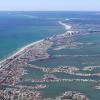
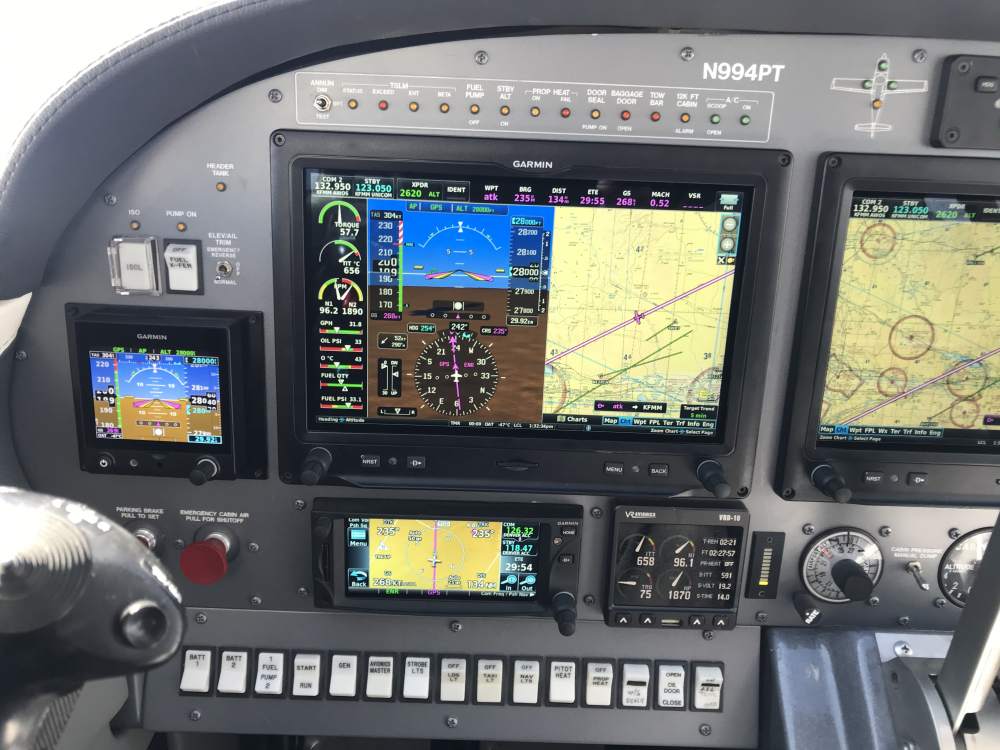
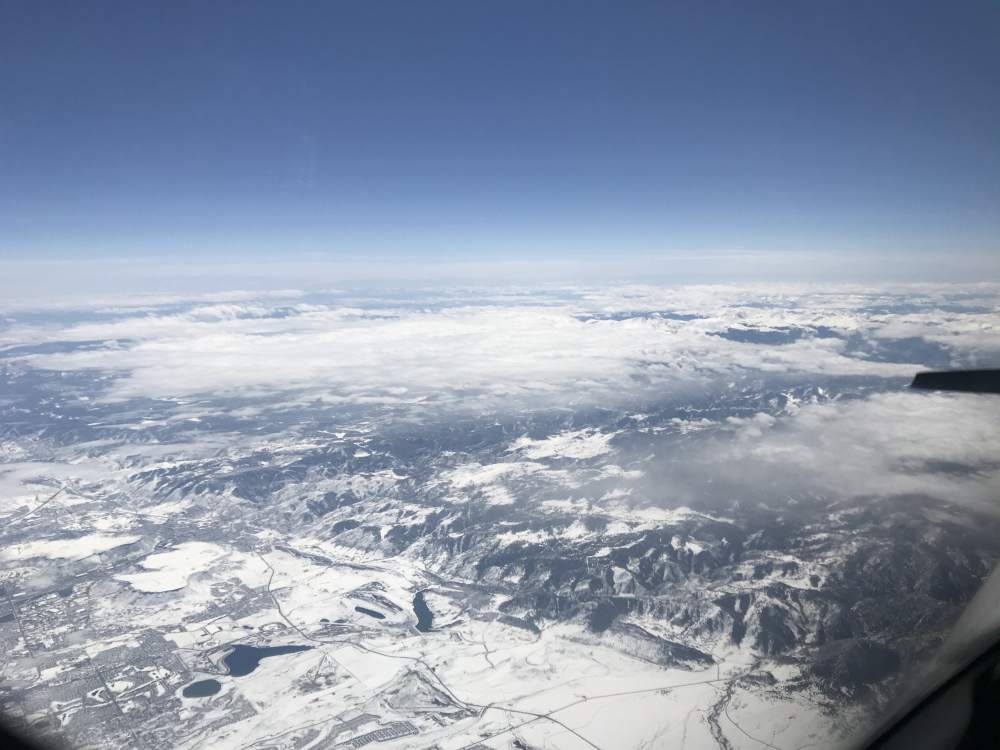
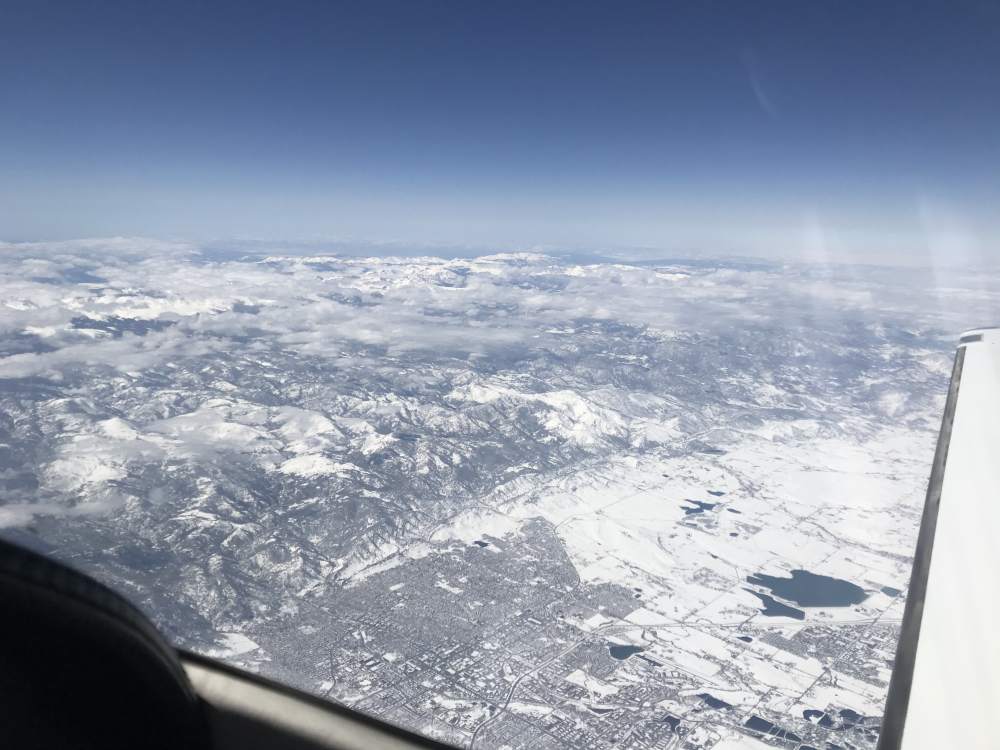
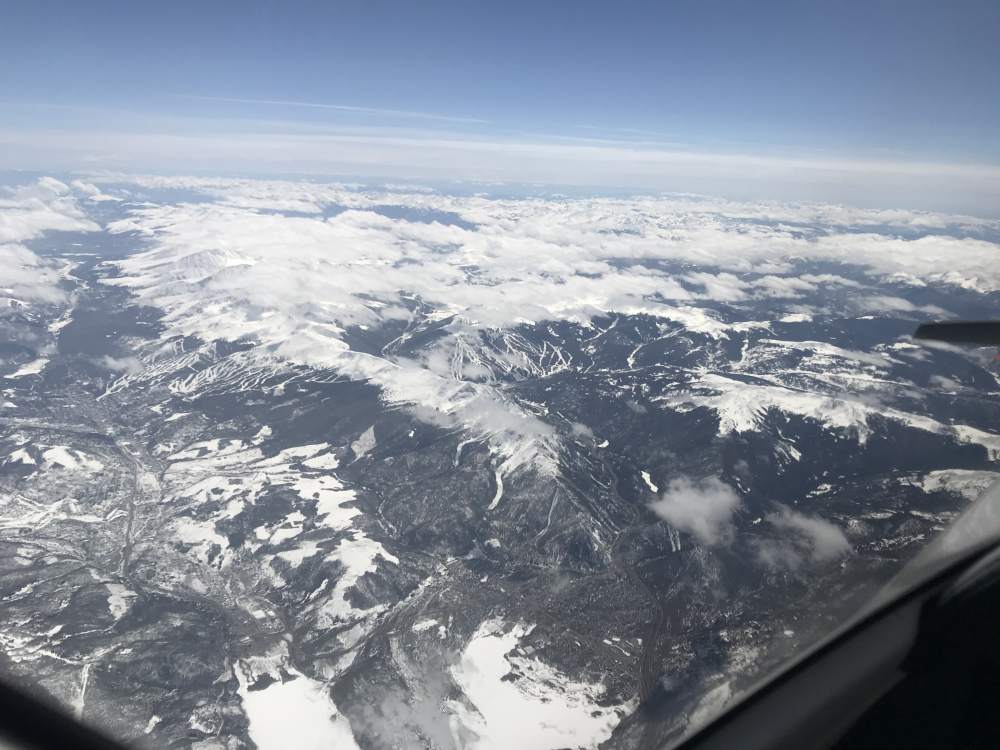
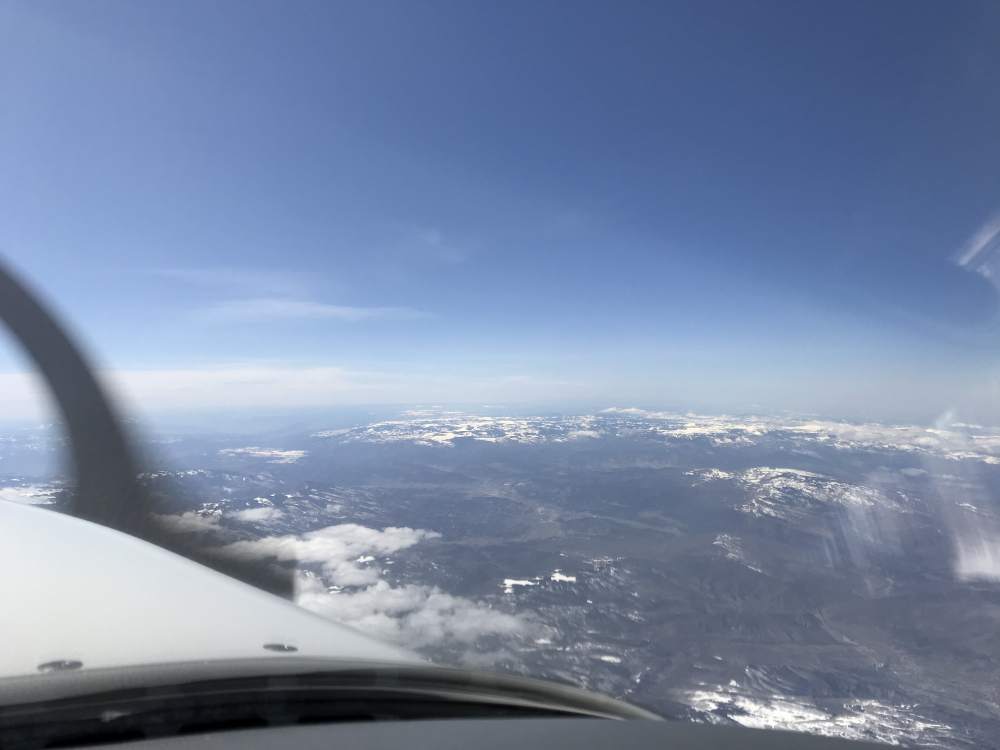
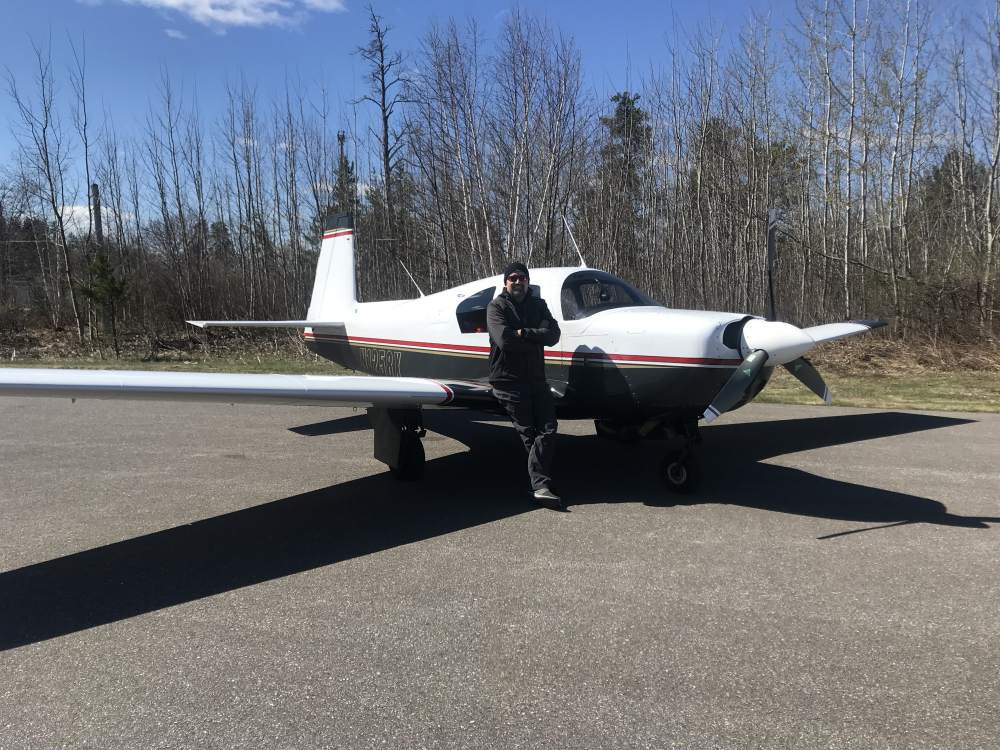


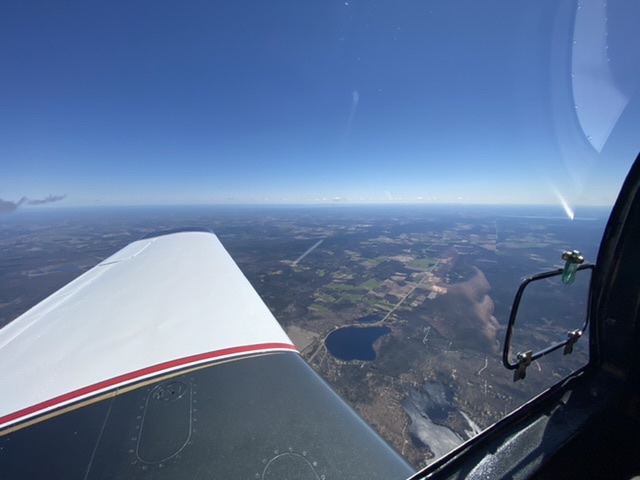


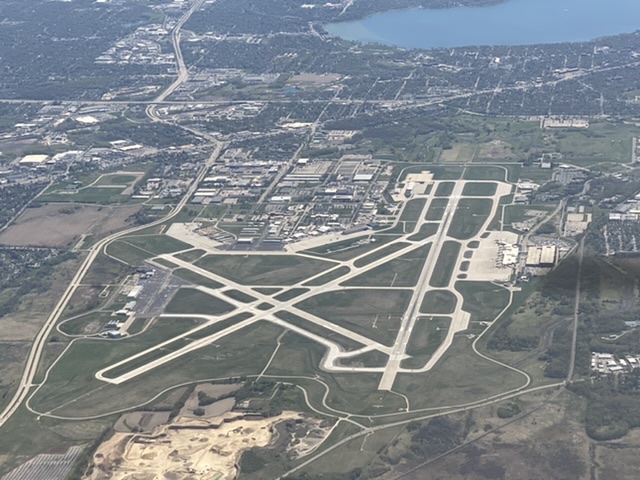
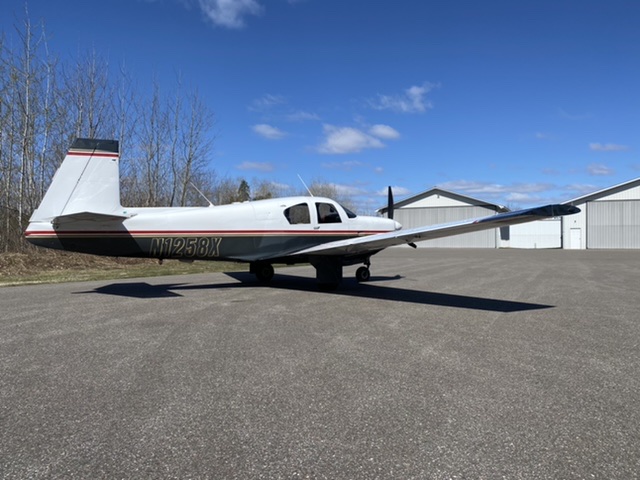

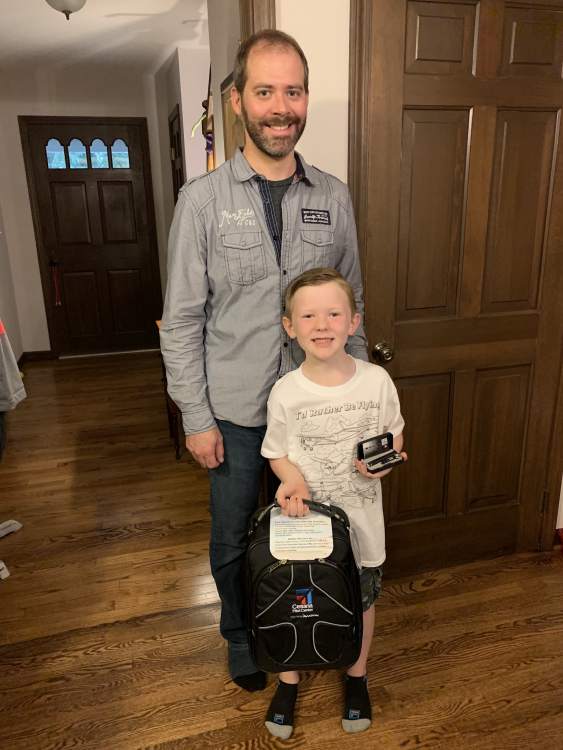
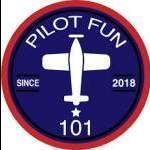



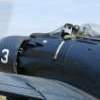

.thumb.jpg.44bc5ad17b44ec09b48bdca2a82f7a76.jpg)
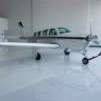


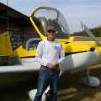
.jpg.bc4cd82d0844deaac9944ea24258b715.jpg)
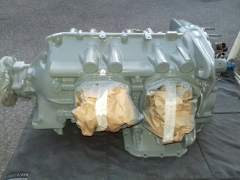
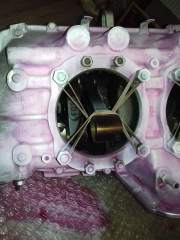
.jpg.a85cd55c55c1d29db7e51503062914e7.jpg)
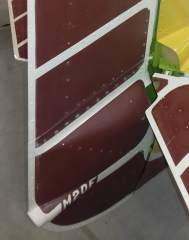
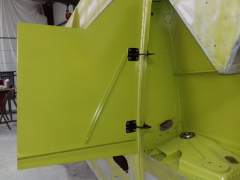
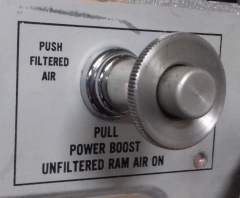
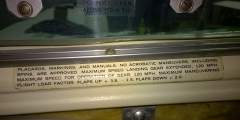

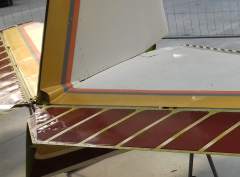
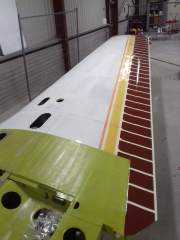
![20220718_163427[1].jpg](https://mooneyspace.com/uploads/monthly_2022_07/small.830764417_20220718_1634271.jpg.5655cb82084979f7206754e7b31145d6.jpg)
.jpg.e72a1b3775c6f39a7327dd7e1d5e7713.jpg)
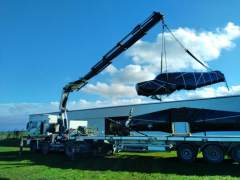
.jpg.8bb3da554737b12f67a69a9bef83a37e.jpg)
